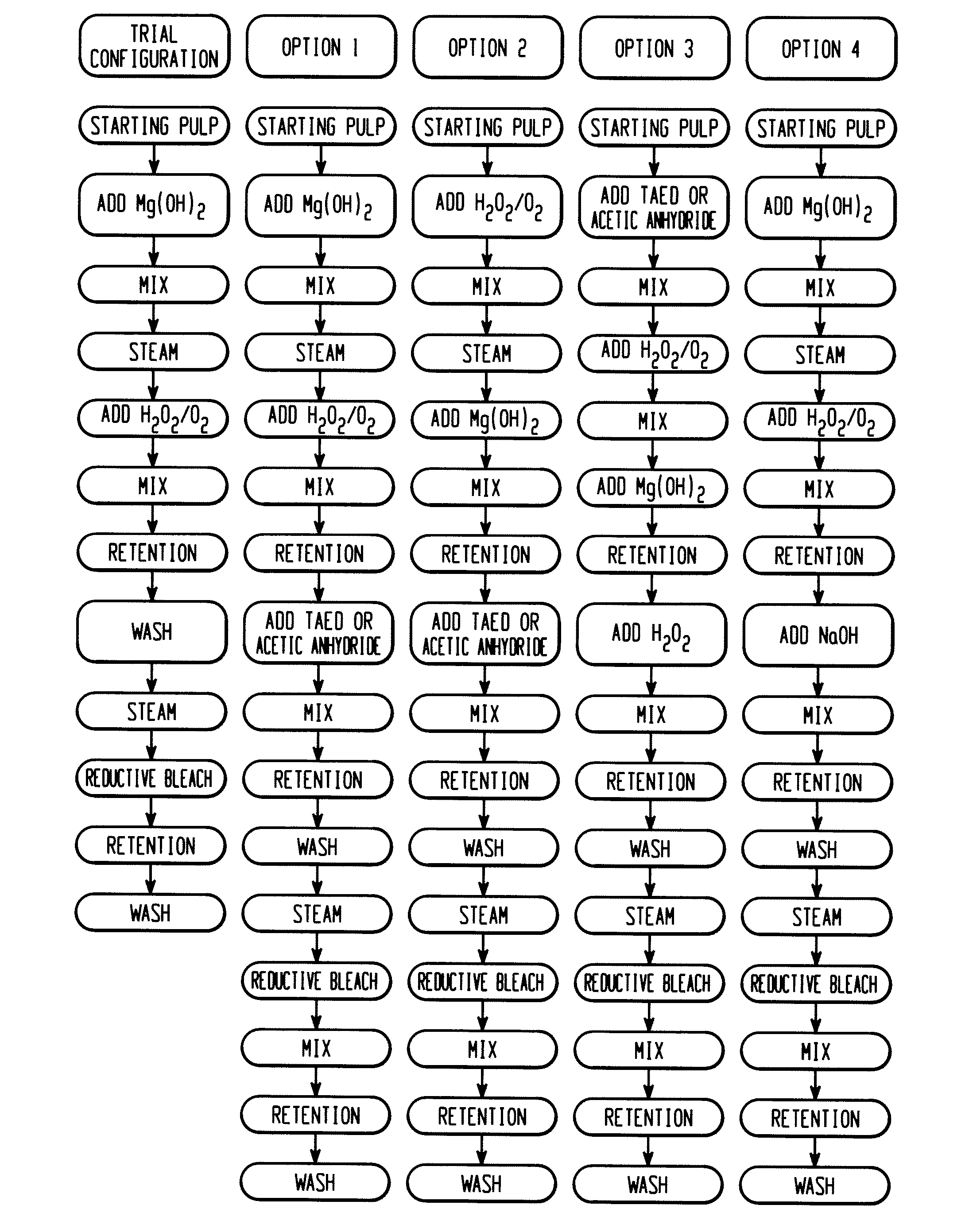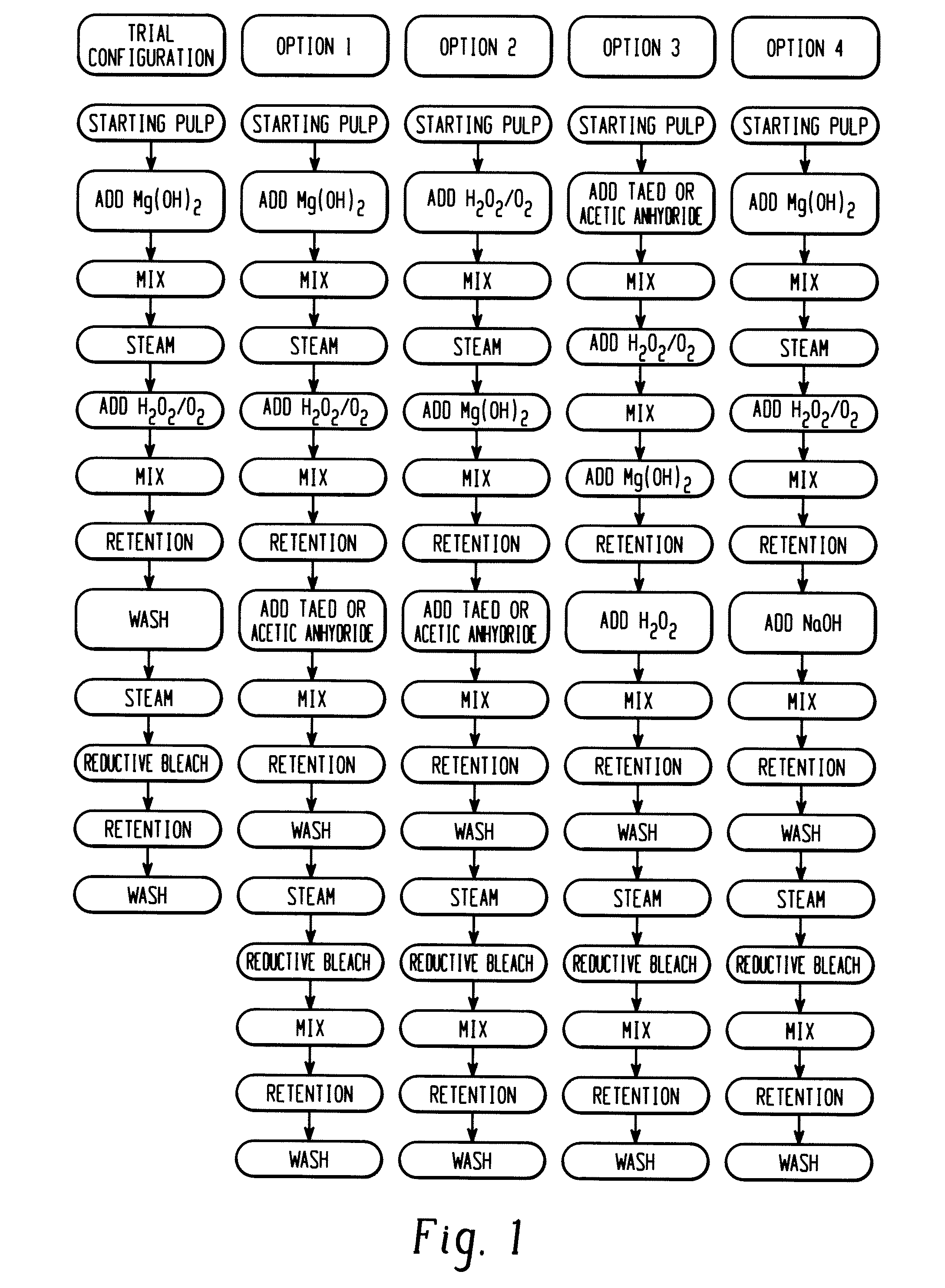High Brightness Pulps From Lignin Rich Waste Papers
a technology of pulp, which is applied in the field of high brightness pulp from lignin rich waste paper, can solve the problems of difficult re-use, inconvenient recycling of paper, and insufficient technology for economical re-use of paper waste, so as to achieve similar brightness gains, reduce the intensity of color hue, brightness, and reduce the intensity.
- Summary
- Abstract
- Description
- Claims
- Application Information
AI Technical Summary
Benefits of technology
Problems solved by technology
Method used
Image
Examples
Embodiment Construction
[0098]The invention is described in detail below for purposes of illustration only. Modifications within the spirit and scope of the invention, set forth in the appended claims, will be readily apparent to one of skill in the art. As used herein, terminology and abbreviations have their ordinary meaning unless otherwise stated.
[0099]FIG. 1 illustrates the sequence of steps employed in a variety of bleach processes wherein starting pulp containing a mixture of chemical and high yield fibers pass through a sequence of steps. Where a particular block in the flow diagram states “Add Mg(OH)2” or “Add H2O2” or “Add TAED or Acetic Anhydride”, it should be understood that the indicated additive, or a precursor therefor, is incorporated into the pulp admixture in an amount which is effective when combined with the other additives indicated in the other blocks of that sequence to produce a brightening on lightening of the pulp as indicated in the body of the specification. Similarly, “MIX” in...
PUM
| Property | Measurement | Unit |
|---|---|---|
| pressure | aaaaa | aaaaa |
| temperature | aaaaa | aaaaa |
| temperature | aaaaa | aaaaa |
Abstract
Description
Claims
Application Information
 Login to View More
Login to View More - R&D
- Intellectual Property
- Life Sciences
- Materials
- Tech Scout
- Unparalleled Data Quality
- Higher Quality Content
- 60% Fewer Hallucinations
Browse by: Latest US Patents, China's latest patents, Technical Efficacy Thesaurus, Application Domain, Technology Topic, Popular Technical Reports.
© 2025 PatSnap. All rights reserved.Legal|Privacy policy|Modern Slavery Act Transparency Statement|Sitemap|About US| Contact US: help@patsnap.com



